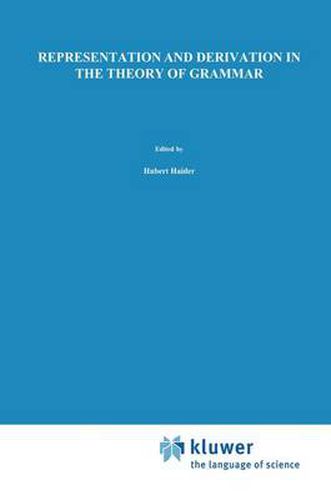Readings Newsletter
Become a Readings Member to make your shopping experience even easier.
Sign in or sign up for free!
You’re not far away from qualifying for FREE standard shipping within Australia
You’ve qualified for FREE standard shipping within Australia
The cart is loading…






This title is printed to order. This book may have been self-published. If so, we cannot guarantee the quality of the content. In the main most books will have gone through the editing process however some may not. We therefore suggest that you be aware of this before ordering this book. If in doubt check either the author or publisher’s details as we are unable to accept any returns unless they are faulty. Please contact us if you have any questions.
Derivation or Representation? Hubert Haider & Klaus Netter 1 The Issue Derivation and Representation - these keywords refer both to a conceptual as well as to an empirical issue. Transformational grammar was in its outset (Chomsky 1957, 1975) a derivational theory which characterized a well-formed sentence by its derivation, i.e. a set of syntactic representations defined by a set of rules that map one representation into another. The set of mapping rules, the transformations, eventually became more and more abstract and were trivialized into a single one, namely move a , a general movement-rule. The constraints on movement were singled out in systems of principles that ap ply to the resulting representations, i.e. the configurations containing a moved element and its extraction site, the trace. The introduction of trace-theory (d. Chomsky 1977, ch.3 17, ch. 4) in principle opened up the possibility of com pletely abandoning movement and generating the possible outputs of movement directly, i.e. as structures that contain gaps representing the extraction sites.
$9.00 standard shipping within Australia
FREE standard shipping within Australia for orders over $100.00
Express & International shipping calculated at checkout
This title is printed to order. This book may have been self-published. If so, we cannot guarantee the quality of the content. In the main most books will have gone through the editing process however some may not. We therefore suggest that you be aware of this before ordering this book. If in doubt check either the author or publisher’s details as we are unable to accept any returns unless they are faulty. Please contact us if you have any questions.
Derivation or Representation? Hubert Haider & Klaus Netter 1 The Issue Derivation and Representation - these keywords refer both to a conceptual as well as to an empirical issue. Transformational grammar was in its outset (Chomsky 1957, 1975) a derivational theory which characterized a well-formed sentence by its derivation, i.e. a set of syntactic representations defined by a set of rules that map one representation into another. The set of mapping rules, the transformations, eventually became more and more abstract and were trivialized into a single one, namely move a , a general movement-rule. The constraints on movement were singled out in systems of principles that ap ply to the resulting representations, i.e. the configurations containing a moved element and its extraction site, the trace. The introduction of trace-theory (d. Chomsky 1977, ch.3 17, ch. 4) in principle opened up the possibility of com pletely abandoning movement and generating the possible outputs of movement directly, i.e. as structures that contain gaps representing the extraction sites.